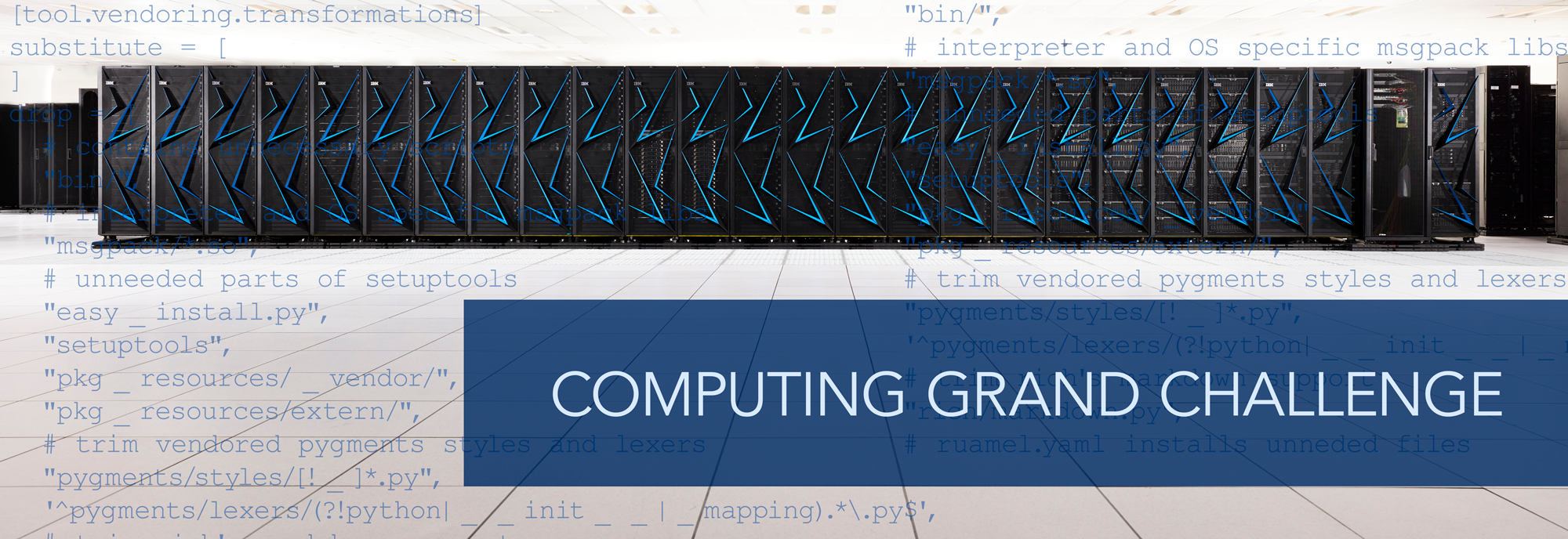
The Computing Grand Challenge Program allocates significant quantities of institutional computational resources to LLNL researchers to perform cutting edge research on the LC capability computers.
Institutional Computing Grand Challenge program celebrates its 18th campaign
Research projects ranging in scope from simulations predicting the impact of climate change on California to calculations of electrocatalyst instability in hydrogen production systems were among those allocated time on Laboratory supercomputers under the recently announced Institutional Unclassified Computing Grand Challenge Awards. The 18th Annual Computing Grand Challenge campaign awarded over 87 thousand node hours per week to projects such as these that address compelling, large-scale problems, push the envelope of capability computing, and advance science. “As in past years, the diversity and quality of this year’s proposals showcase the scientific breadth and excellence of LLNL’s computational science community” said Bruce Hendrickson, Computing Associate Director. “These activities are part of what makes the Lab such an exciting place to work.”
Teams with winning proposals will be allocated time on Quartz, a 3.7 petaFLOP/s machine, Ruby, a 6.0 petaFLOP/s machine, and Lassen, a ~23 petaFLOP/s machine. Quartz, Ruby, and Lassen are systems dedicated to unclassified research through the Laboratory’s Multiprogrammatic & Institutional Computing (M&IC) program. High performance computers generally consist of thousands of cores; the Quartz system has 2,976 nodes each with 36 cores, for a total of 107,136 cores, the Ruby system has 1,480 nodes each with 56 cores, for a total of 84,672 cores, while Lassen has 788 nodes each with 44 cores and 4 GPUs, for a total of 30,096 cores and 3,152 GPUs. Codes that have been written or modified to use the powerful GPUs on Lassen have seen a large increase in performance over CPU-only platforms.
“The computing allocations announced today in the Computing Grand Challenge program directly support continuing excellence in our computing, simulation, and data science core competency,” said Pat Falcone, Deputy Director for Science & Technology. “Execution of these research projects with the allocated compute time will extend our capabilities as well as deliver important scientific discoveries.”
Project proposals were reviewed by a minimum of three internal and one external referees. Criteria used in selecting the projects included: quality and potential impact of proposed science and/or engineering, impact of proposed utilization of Grand Challenge computing resources, ability to effectively utilize a high-performance institutional computing infrastructure, quality and extent of external collaborations, and alignment with the Laboratory strategic vision. Allocations were awarded in two categories, Tier 1 and Tier 2. Tier 1 projects receive a higher allocation and a higher priority.
Over the last 20 years, high performance computing resources dedicated to unclassified research have increased more than 10,000-fold from 72 gigaFLOPS in 1997 to almost 34 petaFLOPS today. To put that in perspective, only seven countries in the world possess more computing resources than the Laboratory makes available for unclassified computing.
See the chart for allocations awarded under the Computing Grand Challenge program.
2024 Grand Challenge Proposal Information
How it works
Grand Challenge allocations are awarded annually through a competitive proposal process. The majority of allocations are "Tier 2" awards (25k-50k node-hours), with a smaller number of larger "Tier 1" awards (100k-200k node-hours) given to the highest-ranked proposals that described a compelling need for the additional resources. Lists of all current and past awardees can be found here.
Who can apply
Any LLNL employee can apply! Grand Challenge awards are given solely on the basis of technical merit and anticipated impact. The awards are for compute time only, so applicants must have suitable funding in place to cover their effort in performing the proposed simulation campaigns.
Timeline for 2024 Computing Grand Challenge program
August 17, 2023 at 3pm: Grand Challenge Town Hall
August 30, 2023: Proposals due
November 10, 2023: Review deadline
November 29, 2023: Grand Challenge scoring committee meeting
December 18, 2023: Awards announced
January 1, 2024: Grand Challenge allocations begin
Grand Challenge resources are intended to:
-
Enable highly visible computational science through high impact publications
-
Demonstrate novel and/or cutting-edge use of HPC (e.g. new codes, new algorithms, new workflows)
-
Enhance/maintain LLNL’s reputation as a leader in HPC and computational science
Grand Challenge resources are NOT intended to:
-
Supplement programmatic or directorate compute resources
-
Provide long-term support for projects that don’t have external visibility




